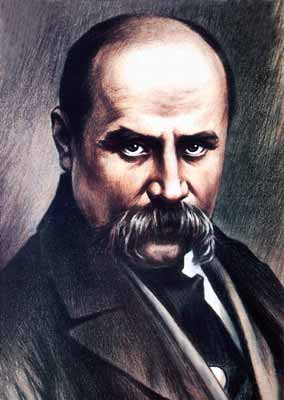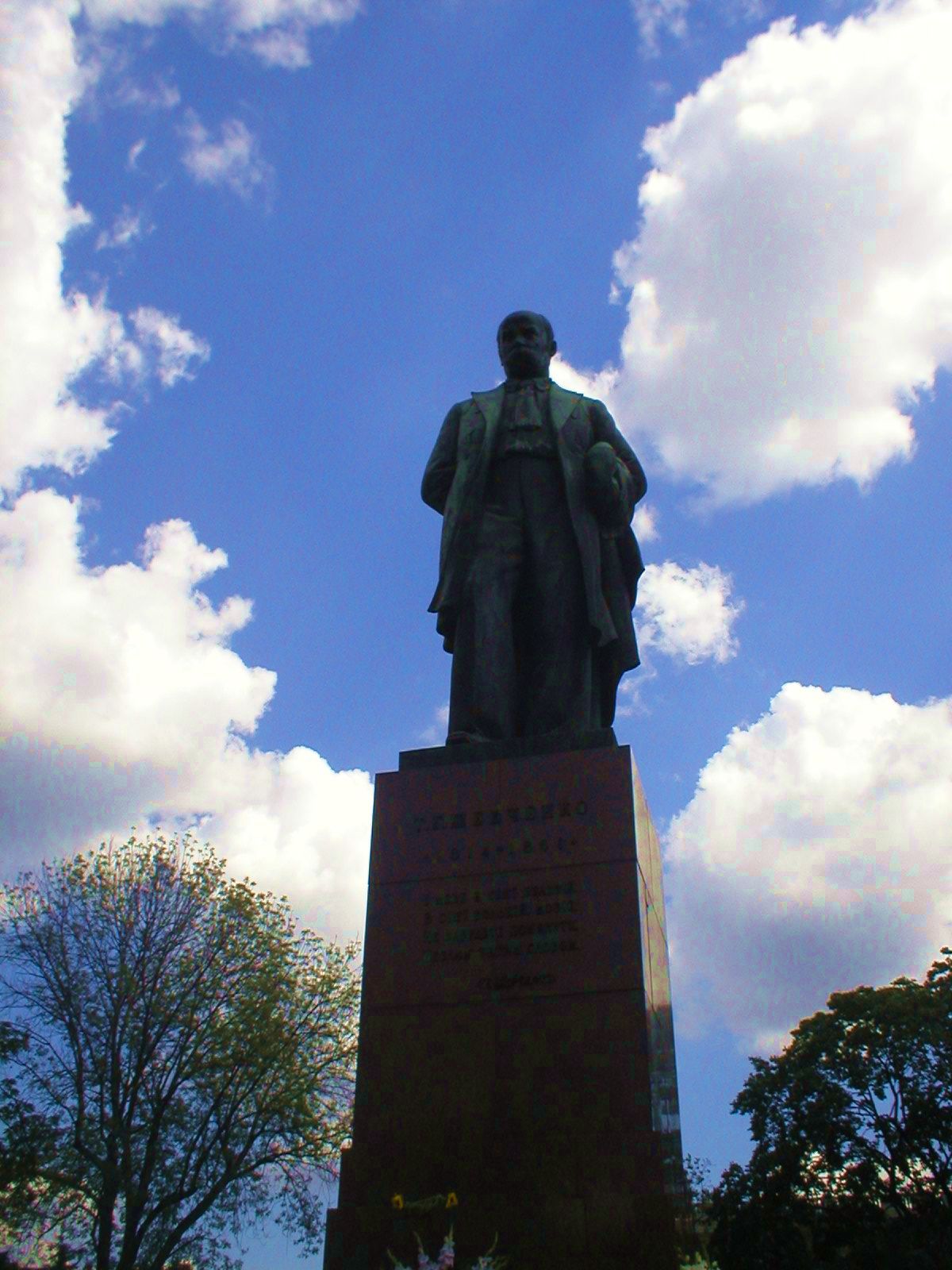Taras Hryhorovich Shevchenko

Taras Hryhorovich Shevchenko (b. Feb. 25 [March 9, New Style], 1814, Morintsy, Ukraine, –d. Feb. 26 [March 10], 1861, St. Petersburg, Russia), is the foremost Ukrainian poet, prose writer, painter and playwright of the 19th century. He was a major figure of the Ukrainian national revival. Taras Shevchenko was a man of universal talent. All his life and creative work were dedicated to the people of Ukraine. The poet dreamed about the times when his country would be a free sovereign state, where the Ukrainian language, clture and history would be highly valued, and the people would be happy and free. Born a serf, Shevchenko was freed in 1838 while a student at the St. Petersburg Academy of Fine Arts. His first collection of poems, entitled Kobzar (1840, "Kobzar"), expressed the historicism and the folkloristic interests of the Ukrainian Romantics, but his poetry soon moved away from nostalgia for Cossack life to a more sombre portrayal of Ukrainian history, particularly in the long poem " Haidamaks" (1841). In early 1847, Shevchenko started to work a teacher of visual arts at the Kyiv University. There, he has engaged in the activity of the clandestine St. Cyril and Methodius society. When the secret society was suppressed by the Russian authorities in 1847, Shevchenko was punished by exile and compulsory military service for writing the poems "Dream," "Caucasus," and "Epistle," which satirized the oppression of Ukraine by Russia and prophesied a revolution. Though forbidden to write or paint, Shevchenko clandestinely wrote a few lyrical poems during the first years of his exile. He had a revival of creativity after his release in 1857; his later poetry treats historical and moral issues, both Ukrainian and universal.
Taras Shevchenko is also one of the most prominent Ukrainian masters of visual arts. He has worked with easel painting, graphic arts, decorative and ornamental painting, as well as sculpture, watercolor and oil painting. He is the author of more than a thousand pieces of art (more than 160 of which are unfortunately lost). In 1859-1860, the artist has created etchings for the works of Russian and foreign authors. For this, he has was entitled to membership in the Academy of Etching. The name of Taras Shevchenko is well-known in the world - monuments to him were erected in numerous countries, his literary works were translated into almost all languages of the world. The National Opera House, Kyiv National University, a central boulevard in Kyiv as well as many establishments, streets and squares bear the name of the great Ukrainian poet and artist, Taras Shevchenko. Special gratitude to
O. Nechiporuk |
 In 1857, Taras Shevchenko was allowed to return from exile, and in 1858 he eventually returned to Moscow, and then came to St. Petersburg. In 1859 he has managed to come to Ukraine, yet he was refused the right to live in his homeland permanently, so he was forced to return to Petersburg. Having ruined his health during his ten year long exile, Taras Shevchenko passed away in early 1861.
In 1857, Taras Shevchenko was allowed to return from exile, and in 1858 he eventually returned to Moscow, and then came to St. Petersburg. In 1859 he has managed to come to Ukraine, yet he was refused the right to live in his homeland permanently, so he was forced to return to Petersburg. Having ruined his health during his ten year long exile, Taras Shevchenko passed away in early 1861.
